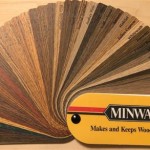What Is the Best Cleaner for Car Interiors?
Maintaining a clean car interior is essential not only for aesthetic appeal but also for hygiene and overall driving experience. Dust, dirt, grime, and spilled liquids can accumulate over time, leading to unpleasant odors, stained surfaces, and even potential health hazards. Selecting the appropriate cleaner for specific interior surfaces and understanding the cleaning process are critical for achieving optimal results without causing damage.
The market offers a wide array of car interior cleaners, each formulated to address different types of soiling and catering to various materials. Categorizing these cleaners based on their intended use and properties is the first step in identifying the best option for a particular cleaning task. Considerations such as the material being cleaned (e.g., leather, vinyl, fabric, plastic), the type of stain or grime, and the desired finish (e.g., matte, glossy, protected) will influence the selection process. Moreover, understanding the ingredients and potential effects of each cleaner is crucial for avoiding damage or discoloration.
Choosing the Right Cleaner Based on Material
Different car interior materials require specialized cleaning products to ensure effective cleaning without causing harm. Using an inappropriate cleaner can lead to discoloration, cracking, fading, or other forms of damage. Therefore, identifying the material composition of each surface within the car is paramount before proceeding with any cleaning measures.
Leather: Leather seats and dashboards require gentle, pH-balanced cleaners specifically formulated for leather. Avoid harsh chemicals, solvents, or abrasive cleaners, as these can strip the natural oils from the leather, causing it to dry out, crack, and fade. Opt for leather cleaners that contain moisturizing agents to help maintain the leather's suppleness and prevent damage. Always test the cleaner on an inconspicuous area first to ensure it does not cause discoloration or staining. After cleaning, apply a leather conditioner to nourish the leather and protect it from future wear and tear.
Vinyl: Vinyl surfaces, such as door panels and dashboards, are generally more durable than leather but can still be damaged by harsh chemicals or abrasive cleaners. Use a vinyl cleaner specifically formulated for automotive interiors. These cleaners typically contain surfactants and mild solvents that effectively remove dirt and grime without damaging the vinyl. Avoid using cleaners that contain silicones, as these can leave a greasy residue that attracts dust and dirt. Test the cleaner on an inconspicuous area first and wipe clean with a microfiber cloth.
Fabric: Fabric upholstery, including seats and carpets, is susceptible to stains and odors. Use a fabric cleaner specifically designed for car interiors. These cleaners often contain enzymes that break down organic stains, such as food spills and pet accidents. For heavily soiled areas, consider using a carpet extractor or steam cleaner to thoroughly remove dirt and grime. Always follow the manufacturer's instructions and test the cleaner on an inconspicuous area first. Ensure the fabric is completely dry after cleaning to prevent mold or mildew growth.
Plastic: Plastic components, such as the dashboard, center console, and door panels, are common in car interiors. Use a plastic cleaner designed for automotive use. These cleaners are typically formulated to remove dust, fingerprints, and light grime without damaging the plastic's finish. Avoid using abrasive cleaners, as these can scratch the plastic surface. Apply the cleaner with a microfiber cloth and wipe clean. For stubborn stains, consider using a plastic polish to restore the plastic's shine.
Glass: Interior glass surfaces, such as the windshield and windows, require a dedicated glass cleaner. Use a streak-free glass cleaner specifically formulated for automotive use. These cleaners typically contain ammonia or other solvents that dissolve grime and leave a clear, streak-free finish. Avoid using household glass cleaners, as these can contain harsh chemicals that can damage the car's interior surfaces. Apply the cleaner with a microfiber cloth and wipe clean. Ensure the glass is completely dry to prevent water spots.
Effective Cleaning Techniques and Tools
The choice of cleaning products is only one part of maintaining a clean car interior. Employing the correct cleaning techniques and utilizing the right tools are equally important for achieving optimal results and preventing damage to interior surfaces. A systematic approach, starting from the least aggressive cleaning methods and progressing to more intensive techniques as needed, is highly recommended.
Vacuuming: Vacuuming is the first step in any car interior cleaning process. Use a vacuum cleaner with various attachments to reach all areas of the car, including the seats, carpets, floor mats, and crevices. Pay particular attention to areas that accumulate dirt and debris, such as under the seats and along the edges of the floor mats. Vacuuming removes loose dirt, dust, and debris, preventing them from becoming embedded in the surfaces. Use a crevice tool to reach tight spaces and a brush attachment to loosen dirt from upholstery and carpets.
Microfiber Cloths: Microfiber cloths are an essential tool for cleaning car interiors. They are soft, absorbent, and non-abrasive, making them ideal for wiping down surfaces without scratching or damaging them. Use different microfiber cloths for different tasks, such as cleaning leather, vinyl, plastic, and glass. Regularly wash the microfiber cloths to remove accumulated dirt and grime.
Brushes: Various brushes can be used to clean car interiors, depending on the surface being cleaned. A soft-bristled brush is ideal for cleaning leather and delicate surfaces, while a stiffer brush can be used to scrub heavily soiled carpets and floor mats. Use a detailing brush to reach tight spaces and crevices. Regularly clean the brushes to remove accumulated dirt and grime.
Steam Cleaners: Steam cleaners can be used to sanitize and disinfect car interiors. The hot steam effectively kills bacteria and germs, removes stubborn stains, and loosens dirt and grime. Use a steam cleaner with caution, as excessive heat can damage some surfaces. Follow the manufacturer's instructions and test the steam cleaner on an inconspicuous area first. Ensure the interior is properly ventilated to allow the steam to dissipate.
Carpet Extractors: Carpet extractors are designed to deep clean carpets and upholstery. They spray a cleaning solution onto the surface and then extract the dirty water, leaving the surfaces clean and dry. Use a carpet extractor specifically designed for automotive use. Follow the manufacturer's instructions and test the carpet extractor on an inconspicuous area first. Ensure the carpet and upholstery are completely dry after cleaning to prevent mold or mildew growth.
Addressing Specific Cleaning Challenges
Certain elements within a car’s interior pose unique cleaning challenges. These may include stubborn stains, unpleasant odors, or surfaces that are particularly prone to damage. Addressing these challenges effectively requires specialized knowledge and techniques.
Stain Removal: Removing stains from car interiors requires prompt action and the use of appropriate stain removal products. Identify the type of stain (e.g., food, grease, ink, blood) and select a stain remover specifically formulated for that type of stain. Apply the stain remover to the affected area and follow the manufacturer's instructions. Avoid rubbing the stain, as this can spread it and make it more difficult to remove. Blot the stain with a clean cloth and repeat the process until the stain is removed. For stubborn stains, consider consulting a professional car detailing service.
Odor Elimination: Unpleasant odors in car interiors can be caused by a variety of factors, including food spills, pet accidents, and mold or mildew growth. To eliminate odors, first identify the source of the odor and remove any visible debris. Then, use an odor eliminator specifically formulated for car interiors. These products typically contain enzymes that break down odor-causing molecules. Apply the odor eliminator to the affected area and follow the manufacturer's instructions. For persistent odors, consider using an ozone generator to neutralize the odor molecules. Ensure the car is properly ventilated after using an ozone generator.
Protecting Interior Surfaces: Protecting car interior surfaces from future damage is essential for maintaining their appearance and prolonging their lifespan. Apply a protectant specifically formulated for each type of surface (e.g., leather protectant, vinyl protectant, fabric protectant). These products create a barrier that protects against UV rays, spills, and stains. Regularly apply the protectant to keep the interior surfaces looking their best. Consider using seat covers to protect the seats from wear and tear. Tinting the windows can also help to reduce UV damage.
Preventative Measures: Practicing preventative measures can significantly reduce the need for intensive cleaning and protect the car's interior from damage. Regularly vacuum the car's interior to remove loose dirt and debris. Clean up spills immediately to prevent stains from setting in. Avoid eating or drinking in the car to minimize the risk of spills. Use floor mats to protect the carpets from dirt and wear. Park the car in a shaded area to protect the interior from UV damage. By following these preventative measures, you can keep your car's interior looking clean and well-maintained for years to come.
By carefully selecting the appropriate cleaner based on material, implementing effective cleaning techniques, and addressing specific cleaning challenges with specialized solutions, car owners can maintain a clean, comfortable, and hygienic interior environment.

Best Car Interior Cleaners Review 2024 Ratings

Best Car Interior Cleaners Review 2024 Ratings

Best Car Interior Cleaners Review 2024 Ratings
:max_bytes(150000):strip_icc()/how-to-clean-car-interior-4775265-08-841a91bf649c481a8663348427a23df3.jpg?strip=all)
How To Clean A Car Interior

11 Best Car Interior Cleaner 2024 Autozone

What Is The Best Thing To Clean Car Dashboard
:max_bytes(150000):strip_icc()/how-to-clean-car-interior-4775265-Hero-01-e95ef9c85b5343af9c9dadfb87c51f9d.jpg?strip=all)
How To Clean A Car Interior

The Best Car Upholstery Cleaners For 2024 Tested By Experts

How To Clean And Disinfect A Car Interior Clorox

How To Clean Car Seats
Related Posts








